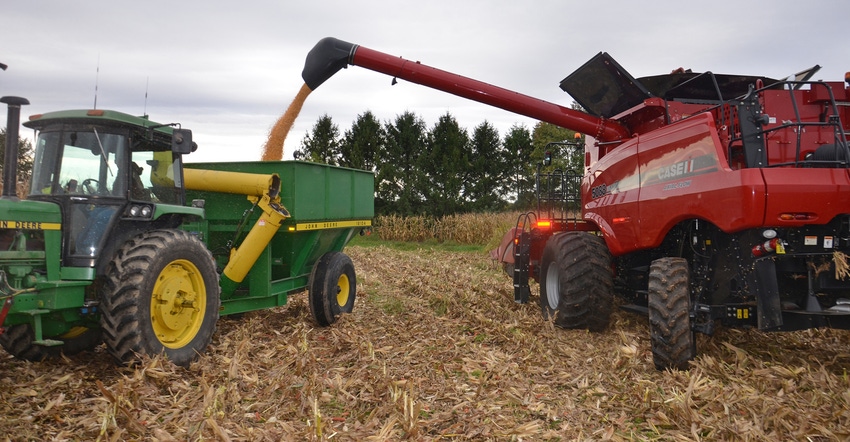
The decision on when to begin harvesting corn this fall may seem a long way off. Yet when the time arrives, findings from a 2020 study that compared harvest dates may guide your decision.
For the second straight year, Indiana Prairie Farmer, Purdue University and the Purdue Throckmorton Ag Center compared three harvest dates on corn. In 2019, a late season, harvest dates were late October, late November and early December, with a windstorm causing major lodging before the final harvest. In 2020, corn was harvested on Sept. 30, Oct. 30 and Nov. 20, with virtually no lodging issues.
Bob Nielsen, a Purdue University Extension corn specialist who analyzed data for the trial in both years, notes that unless lodging became a factor, there was no significant difference in corn yields, corrected to dry bushels, for any harvest dates. Naturally, moisture declined for each hybrid at each harvest date in both years.

Otherwise, the only significant difference in 2020 was that one of the three hybrids yielded less than the other two, but all three yielded at a high level. The field-scale trial was planted April 22 in 2020, compared to June 1 in 2019.
Beck’s supplied the hybrids and the Throckmorton farm crew carried out the trial.
Closer look
Nielsen answers questions about the data:
Is the “invisible yield loss theory” valid? Other people report it occasionally, but it didn’t show up in this trial, Nielsen says. “We expanded from two hybrids to three for 2020, thinking maybe looking at different genetics would matter, but there was simply no yield difference in 2020. There was also no yield difference in 2019 that couldn’t be explained by lodging at the latest harvest date.”
Does corn dry down in the field? Obviously, the longer you leave it, the more it tends to dry. But as it gets later in the season, dry down rates typically drop off dramatically, Nielsen says. “We had some good drying weather until late fall in 2020, and moisture levels continued to drop in all three hybrids,” he says.
How long can you risk letting corn stand? That’s a question a two-year study can’t answer, he notes. In 2019, leaving corn past Thanksgiving exposed it to a storm that caused up to 40% lodging and harvest loss of three to five bushels per acre. In 2020, with the final harvest Nov. 20, all three hybrids were still standing well.
What kind of harvest losses can you tolerate? That’s an individual decision, Nielsen says. This plot was harvested with a 6-year-old Case IH combine and corn head. Total losses in both years, except for the final harvest date in 2019, were extremely small. In 2020, even the highest losses recorded were less than 0.5% of total yield. “The Throckmorton crew does an excellent job of maintaining, adjusting and operating the combine,” Nielsen says. Harvest loss data verifies it, showing what low levels of harvest loss are possible.
About the Author(s)
You May Also Like




